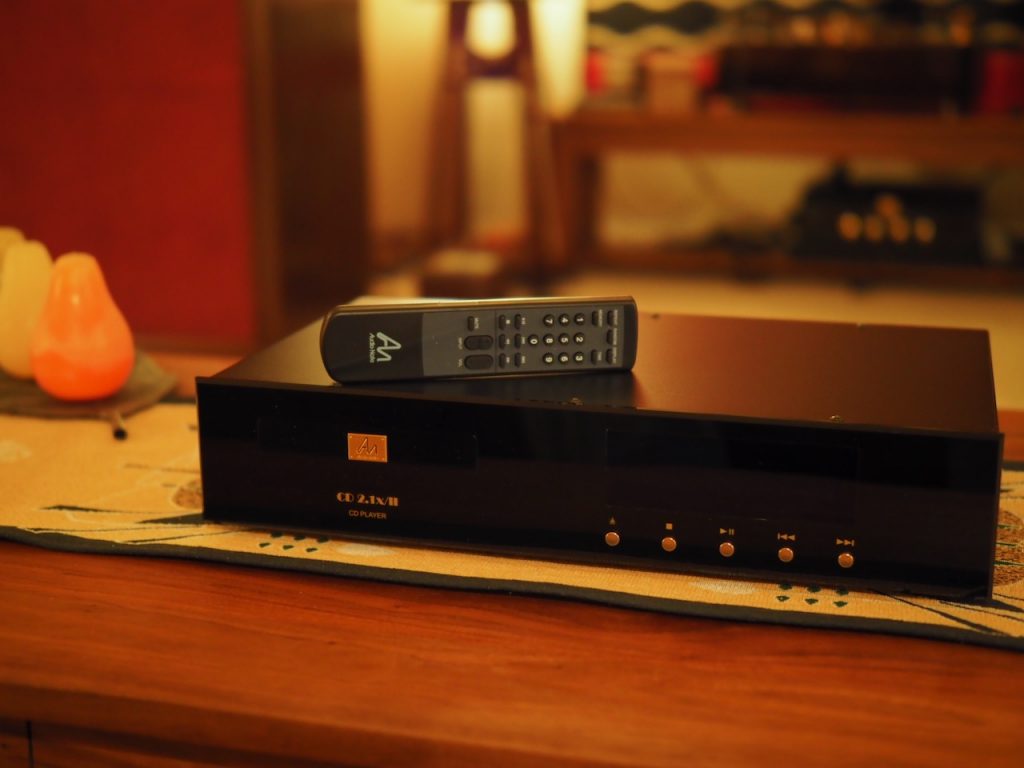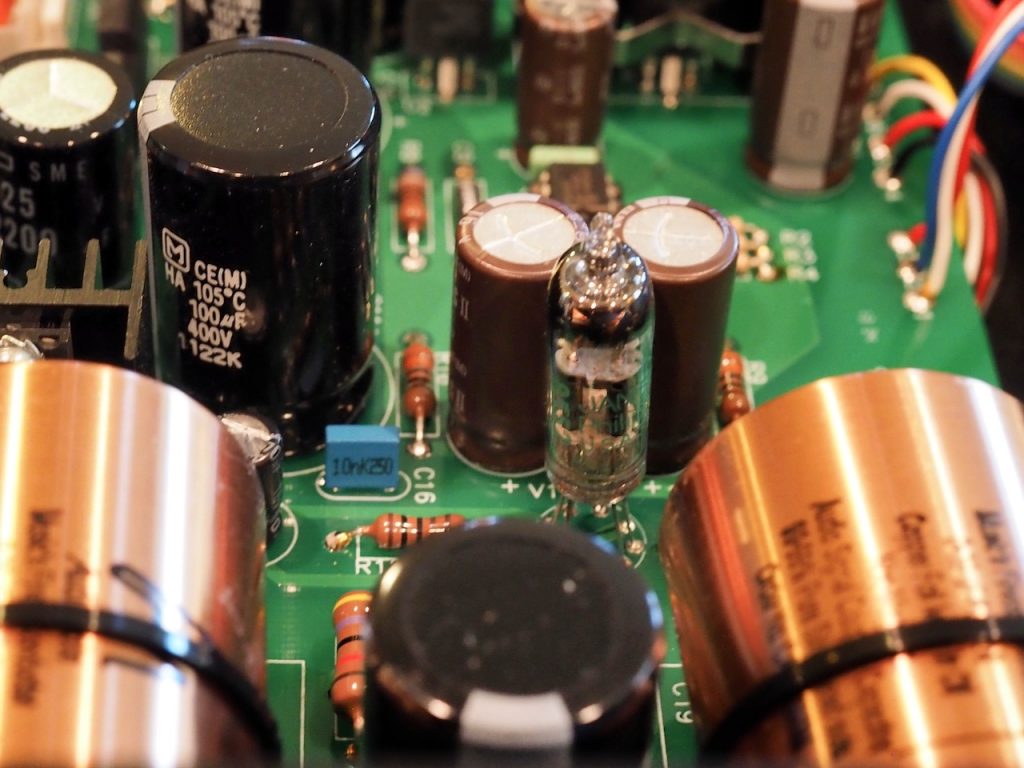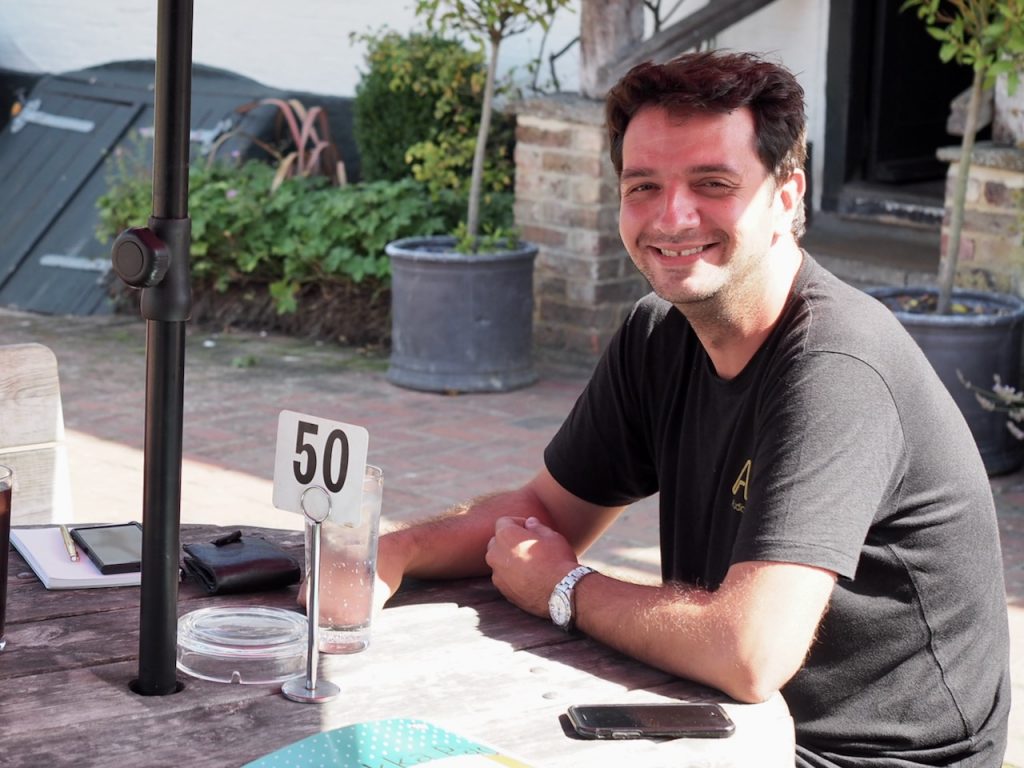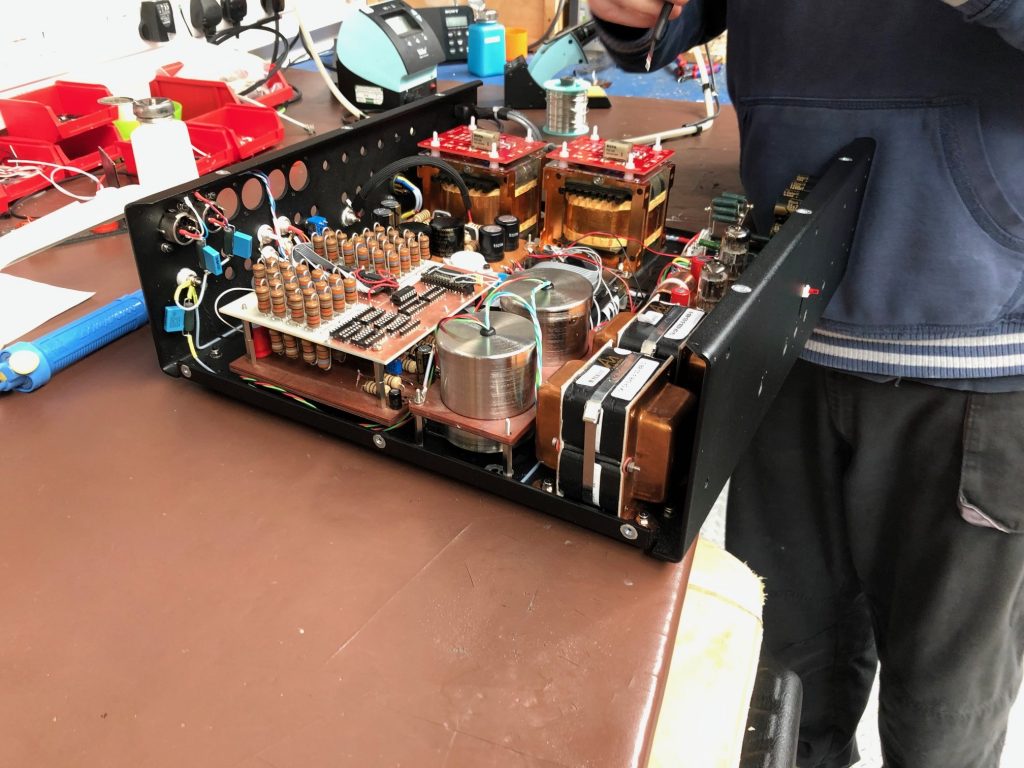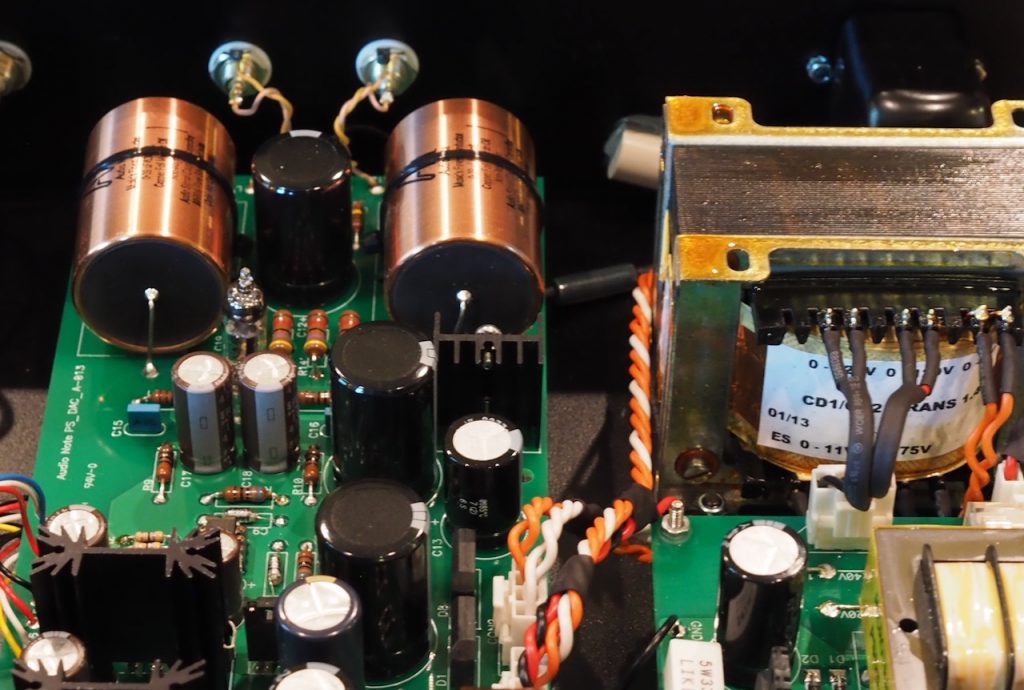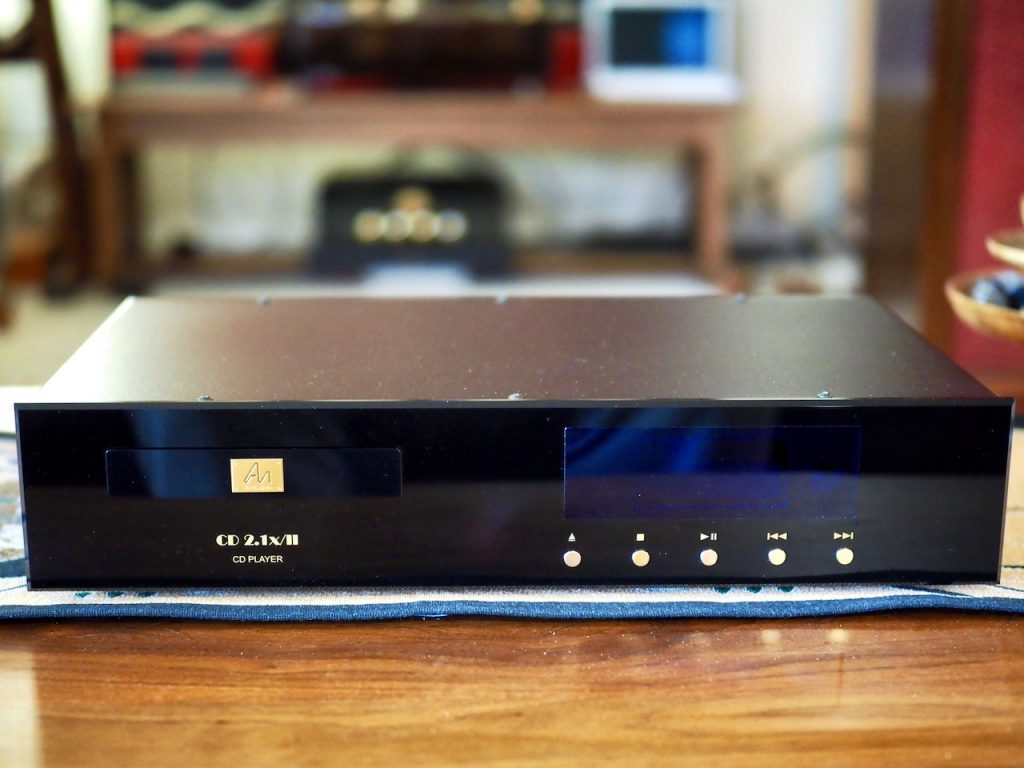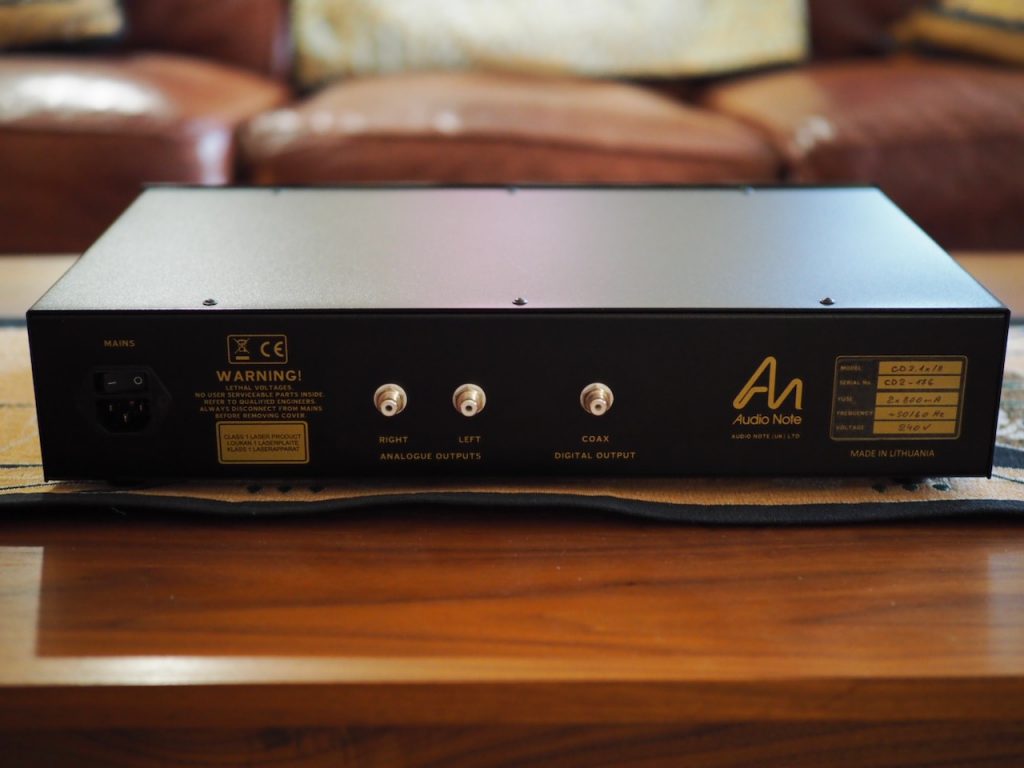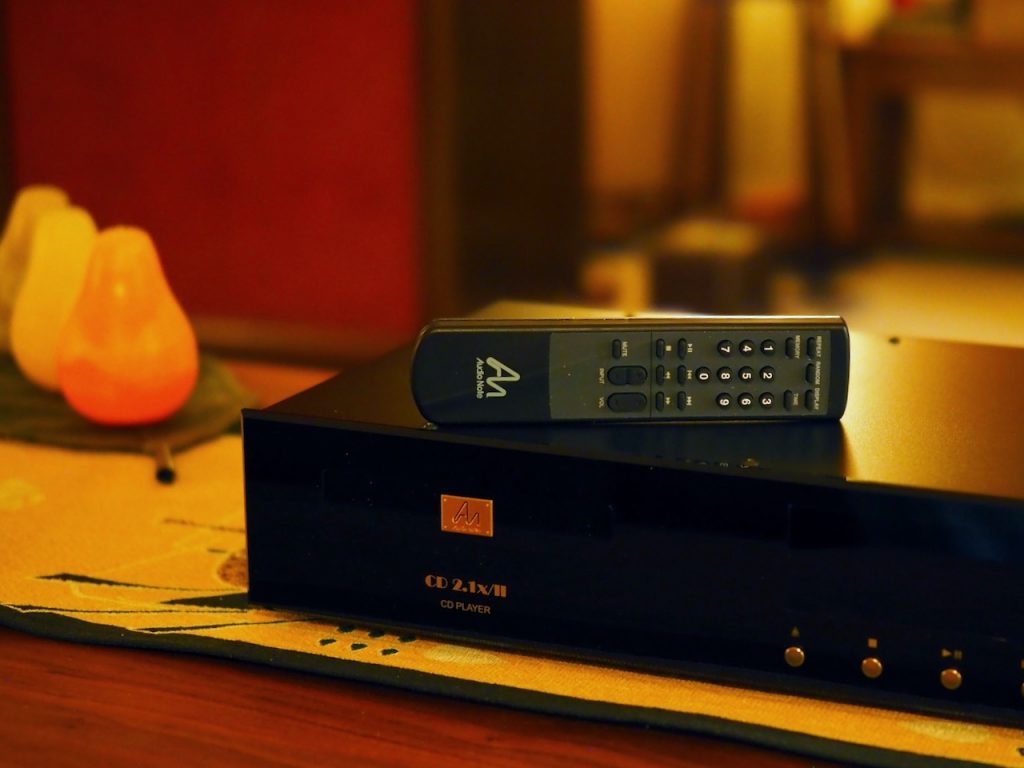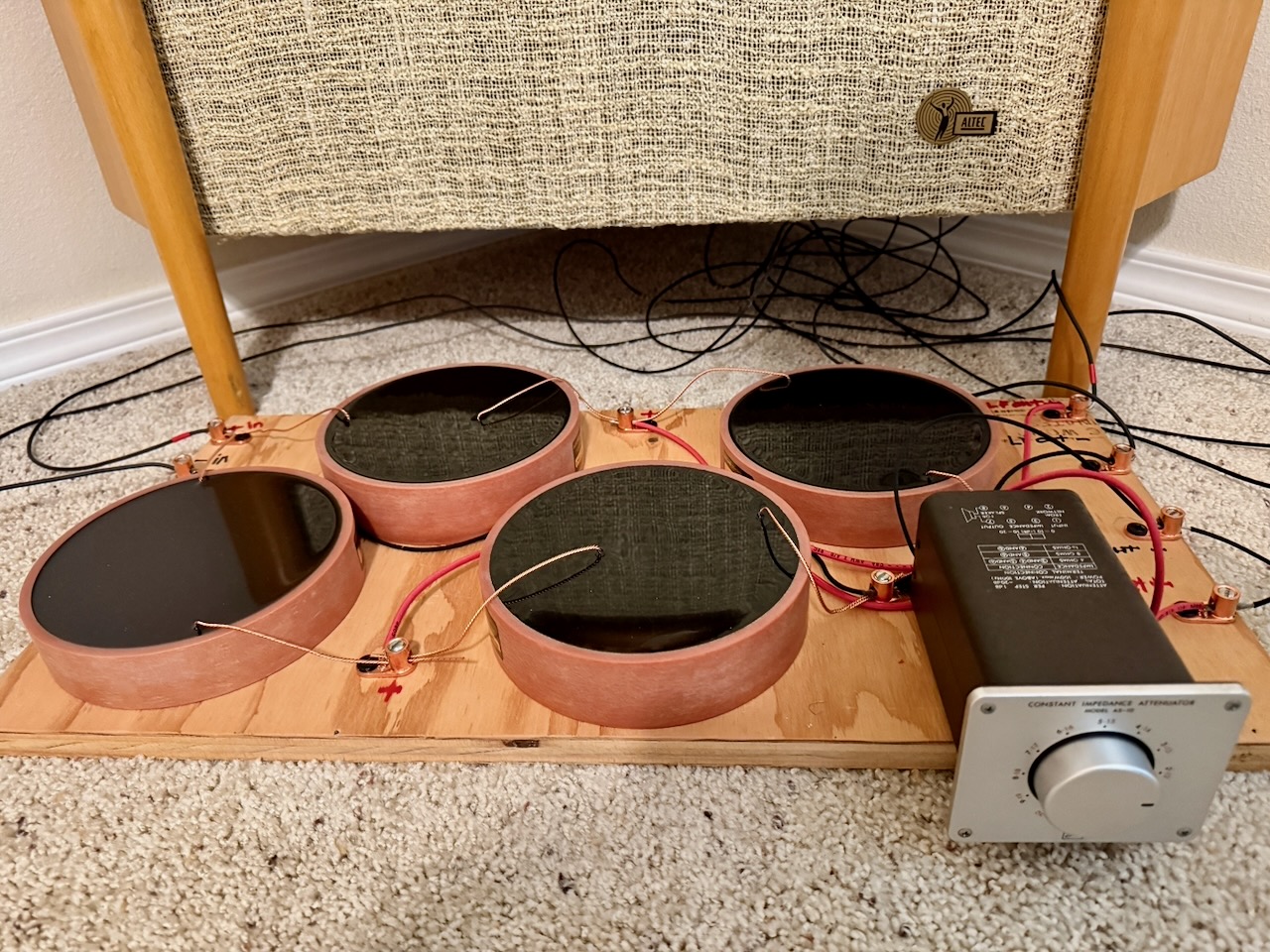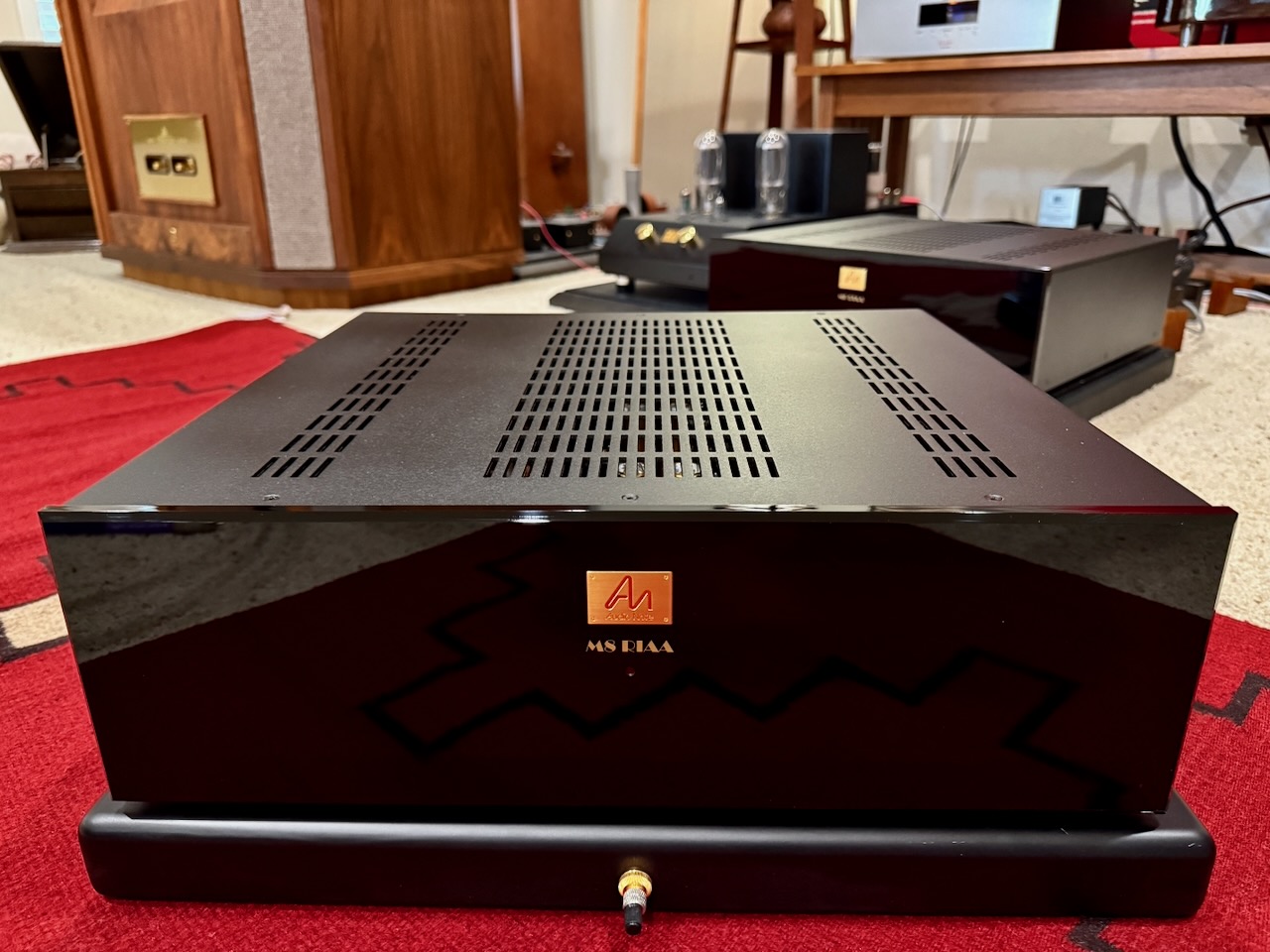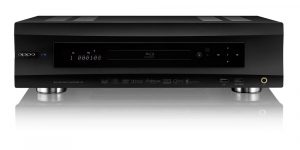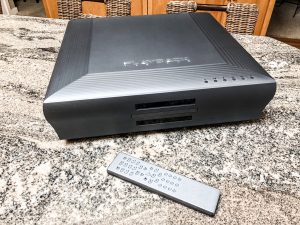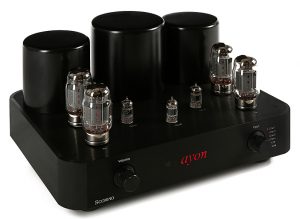The Audio Note (UK) CD 2.1x/II Red Book CD Player ($3874 USD)
Peter, and Audio Note (UK), take Red Book CD players very seriously as a music source, believing they are still the best home digital source for many people.
The CD 2.1x/II (HERE) is the third up a ladder of the five Red Book CD players offered by Audio Note (UK).
The CD 2.1x/II Red Book CD player "fulfills all Audio Note (UK) Level 1 criteria," and is an upgraded version of their CD 1.1x with better parts, like Audio Note (UK) tantalum resistors, Cerafine capacitors, and Audio Note (UK) copper foil capacitors, that are intended to give the CD 2.1x/II "a more open, detailed, and lively performance in comparison with its more affordable stable mate."
To quote the Audio Note (UK) website, "The CD 2.1x/II uses an in-house modified Philips L1210 dedicated Red Book CD mechanism and a simple yet revealing DAC based around the Philips 1543 16-bit multi-bit digital to analogue converter chip. The analogue output stage is equipped with the quite exceptional 6111WA miniature triode and our own in house designed and manufactured Audio Note (UK) copper foil capacitors. This player, like its bigger brothers, features no oversampling and no digital filtering, making for a highly effective sonic combination all housed in a small and robust chassis."
I asked Peter if he would share a few words with us about the CD 2.1x/II.
Peter told me that the CD 2.1x/II benefits from "trickledown" from "the principles, topology and technology from our more expensive products, and distills them into a less expensive product by keeping the fundamentals intact whilst taking out as much cost as possible."
"I know this may sound like an oxymoron, but by carefully listening to the prototypes as they develop it is possible to retain the core qualities and still shed a great deal of cost, critical listening and good judgement is of course key to this endeavor, plus the fact that we have control of the sound of most of the parts used in the circuit.
"We use the TDA1543, as at the time we designed the lower end CD player/DAC range they were the best sounding chip available, so we invested in 10,000 pieces, as immediately it became obvious that they did a good job."
If you haven't read the posts yet on Jeff's Place, Darko Greguras went into detail about how Audio Note (UK) is doing research and development to advance the potential of digital media, and I encourage you to read them for additional information (Part 1 HERE, and Part 2 HERE).
Here's what Darko told me about the CD 2.1x/II:
"The CD 2.1x/II is so well rounded and musical, it is always exciting to discuss our junior products!
"What is so magical about it?
"The CD 2.1x/II is a very good example of how important careful voicing and having a deep understanding of what is going on 'under the hood' is.
"It has a big heart and uses minimal processing, no oversampling and no digital or analogue filtering, combined with a carefully controlled degree of rising edge control, just enough to connect or blend the dots—or samples—into a real music.
"By carefully modeling and controlling both sides of the spectrum to work harmoniously, we have managed to achieve a very articulate voice; that is the fundamental aspect, and why music flows so well with the CD 2.1x/II.
"The CD 2.1x/II was engineered around an economical version of Philips DAC IC, the TDA1543, and the Philips L1210 CD mechanism. The shortest possible route between these fundamental parts always impresses, and elegantly shows how beauty lies in simplicity.
"The output stage was designed around the very musical 6111WA miniature double triode, and an improved selection of our usual custom components are used to raise the CD2.1x/II's specification; Audio Note (UK) 0.5W and 1W tantalum resistors, Audio Note (UK) standard electrolytic capacitors, and Audio Note (UK) copper foil coupling capacitors."
Let's do a "walk-around" of the CD 2.1x/II Red Book CD player.
Starting at the left front of the chassis, you can see the tray for loading the CD, which is opened or closed by the left most button under the display. Proceeding to the right of the open/close button is the "stop" button, the play/pause button, the button for skipping back a track, and finally the button for skipping forward a track.
Now let's take a look at the rear of the chassis. Located on the far left is the mains switch for powering on and off the CD 2.1x/II. Beneath the mains switch is the fuse, and below the fuse is the IEC inlet socket to plug the power cord into.
To the right of the mains switch is the right and left analogue outputs for connecting to a preamplifier, or in the case of this article, the CD inputs for the Oto Phono SE Signature integrated amplifier.
To the right of the analogue outputs is a coax digital output should you decide you want to add one of Audio Note (UK)'s outboard digital-to-analog converters at a later date.
The remote is very handy to use from the listening position, and offers a multitude of features, for which I'll refer you to the owner's manual for more detailed information (HERE).




